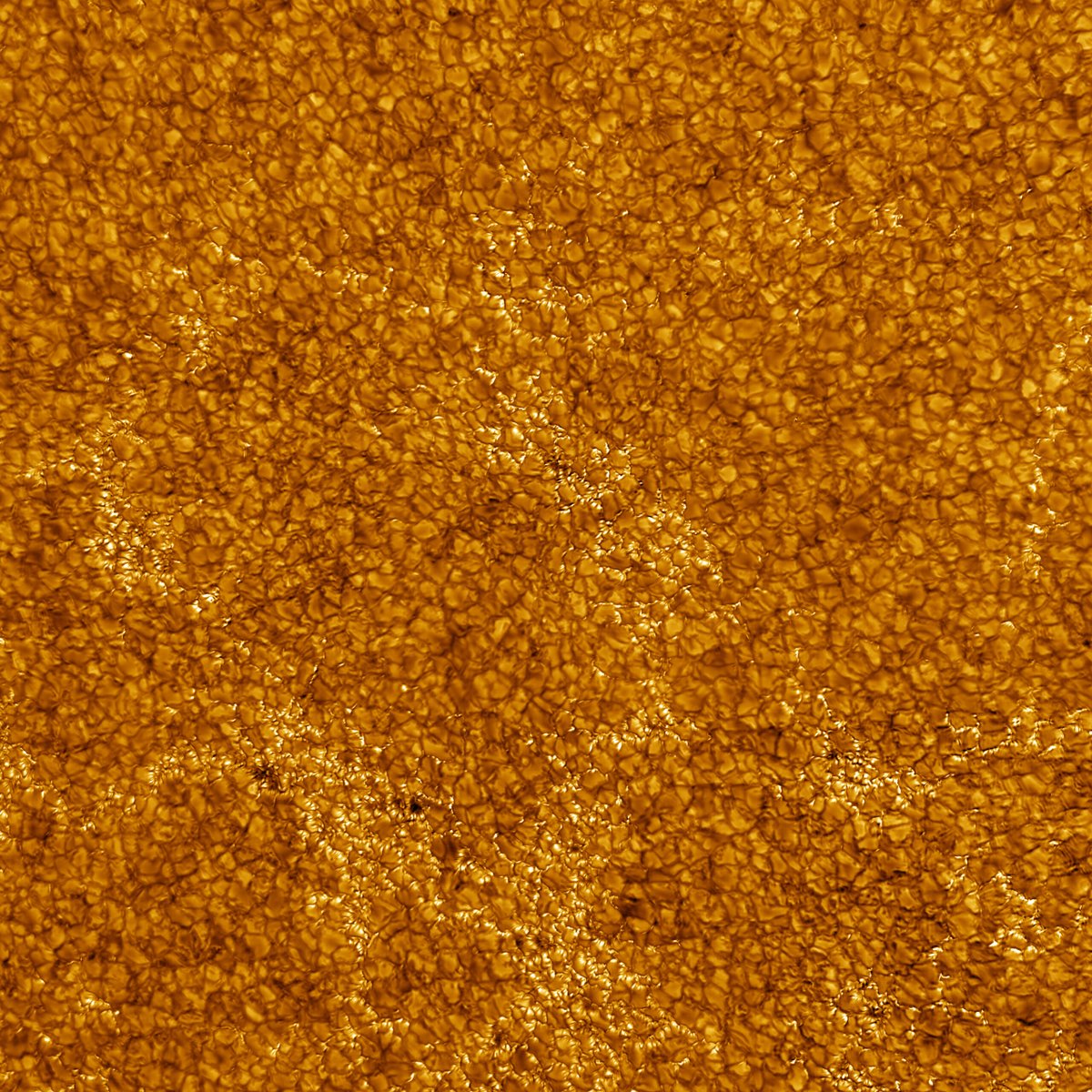
Two spectacular new images of the Sun marking the inauguration of the #InouyeSolarTelescope on Haleakala, Maui.
They show the complementary nature of observing at different wavelengths: @ESASolarOrbiter extends this principle to those invisible from the ground.
HT @PlanRad

They show the complementary nature of observing at different wavelengths: @ESASolarOrbiter extends this principle to those invisible from the ground.
HT @PlanRad


@ESASolarOrbiter @PlanRad Be sure to click & view at full-size: they're lovely.
Both show a an 82,500km square region of the Sun at 18km resolution.
L: in the emission line of H-beta at 486nm showing the chromosphere above the surface
R: in the Fraunhofer G-band at 430nm showing surface granulation
Both show a an 82,500km square region of the Sun at 18km resolution.
L: in the emission line of H-beta at 486nm showing the chromosphere above the surface
R: in the Fraunhofer G-band at 430nm showing surface granulation
@ESASolarOrbiter @PlanRad Original press release from @NatSolarObs, @AURADC, & @NSF is here: nso.edu/press-release/…
@ESASolarOrbiter @PlanRad @NatSolarObs @AURADC @NSF It's also worth pointing out that these two images show the *same* piece of the Sun, whether simultaneously or very close in time (am not sure: the NSO website appears to be stuck at the moment). Maybe someone can make a nice dissolving GIF 🙂
• • •
Missing some Tweet in this thread? You can try to
force a refresh









